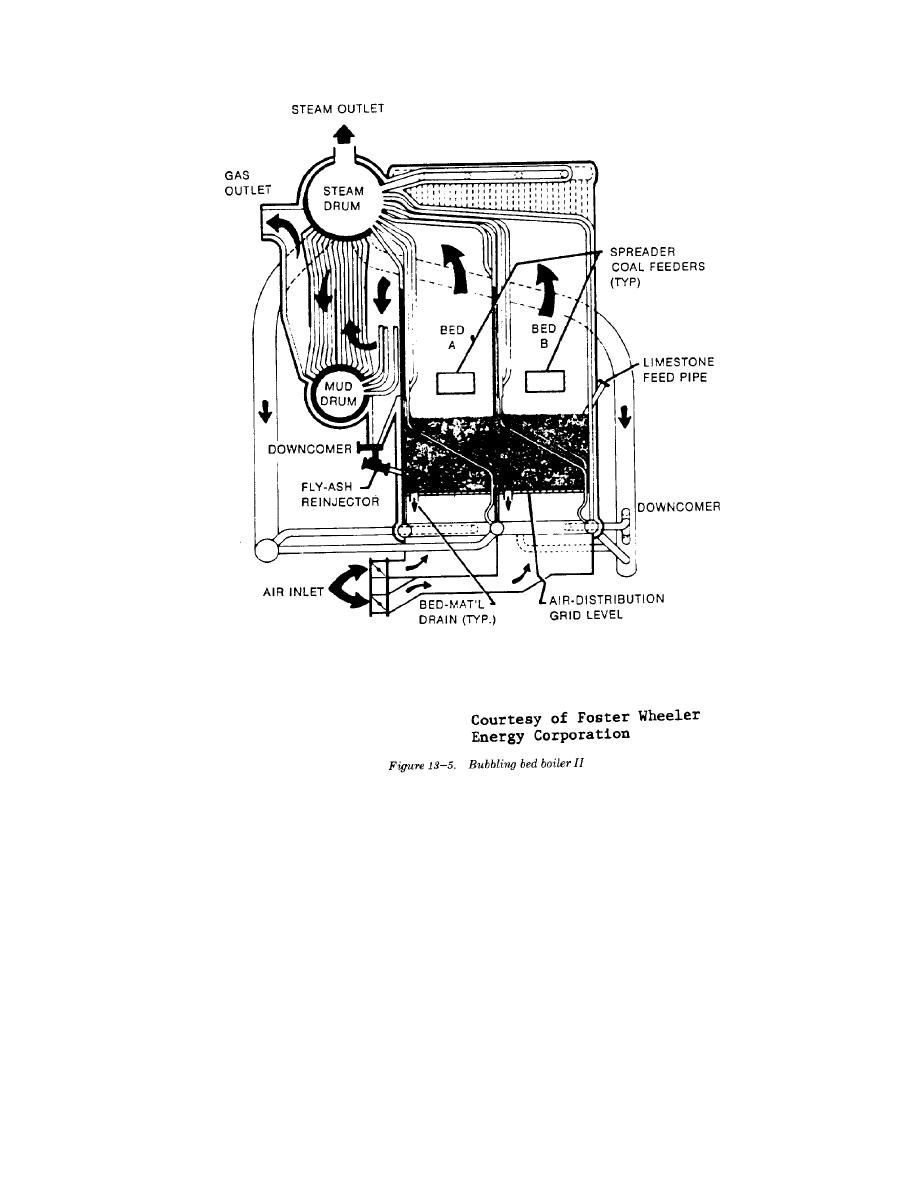
TM 5-815-1/AFR 19-6
(g) Erosion of the heat transfer surface in the
desulfurization takes place. The dual bed
combustion chamber is reduced, since the
design allows coals to be burned at about
surface is parallel to the flow. In a
1750
degrees
Fahrenheit
while
bubbling bed system, the surface
desulfurization takes place at about 1550
generally is perpendicular to the flow.
degrees Fahrenheit. The upper bed also
serves to catch unburned coal particles that
and desulfurization take place in two separate beds,
may have escaped to complete combustion of
allowing each different reaction to occur under optimal
any unburned carbon.
conditions.
(3) A dual bed can be utilized on capacities up to
(1) The lower bed burns coal in a bed of sand,
200,000 pounds per hour of steam. The
fluidized from below by the combustion air
major advantages are: shop fabrication; can
and gases, and maintained at a steady
be retrofitted to some existing oil and gas
equilibrium temperature by the extraction of
fired boilers; enhanced combustion efficiency
energy through in-bed steam generator tubes.
by allowing the lower bed to operate at 1750
The bed depth is more shallow than the con-
degrees Fahrenheit; lower free-board heights
ventional bubbling bed design.
required; and better load following. A typical
(2) The flue gas then travels through an upper
dual bed fluidized combustor is shown in
bed of finely ground limestone where
figure 13-7.
13-5


 Previous Page
Previous Page
